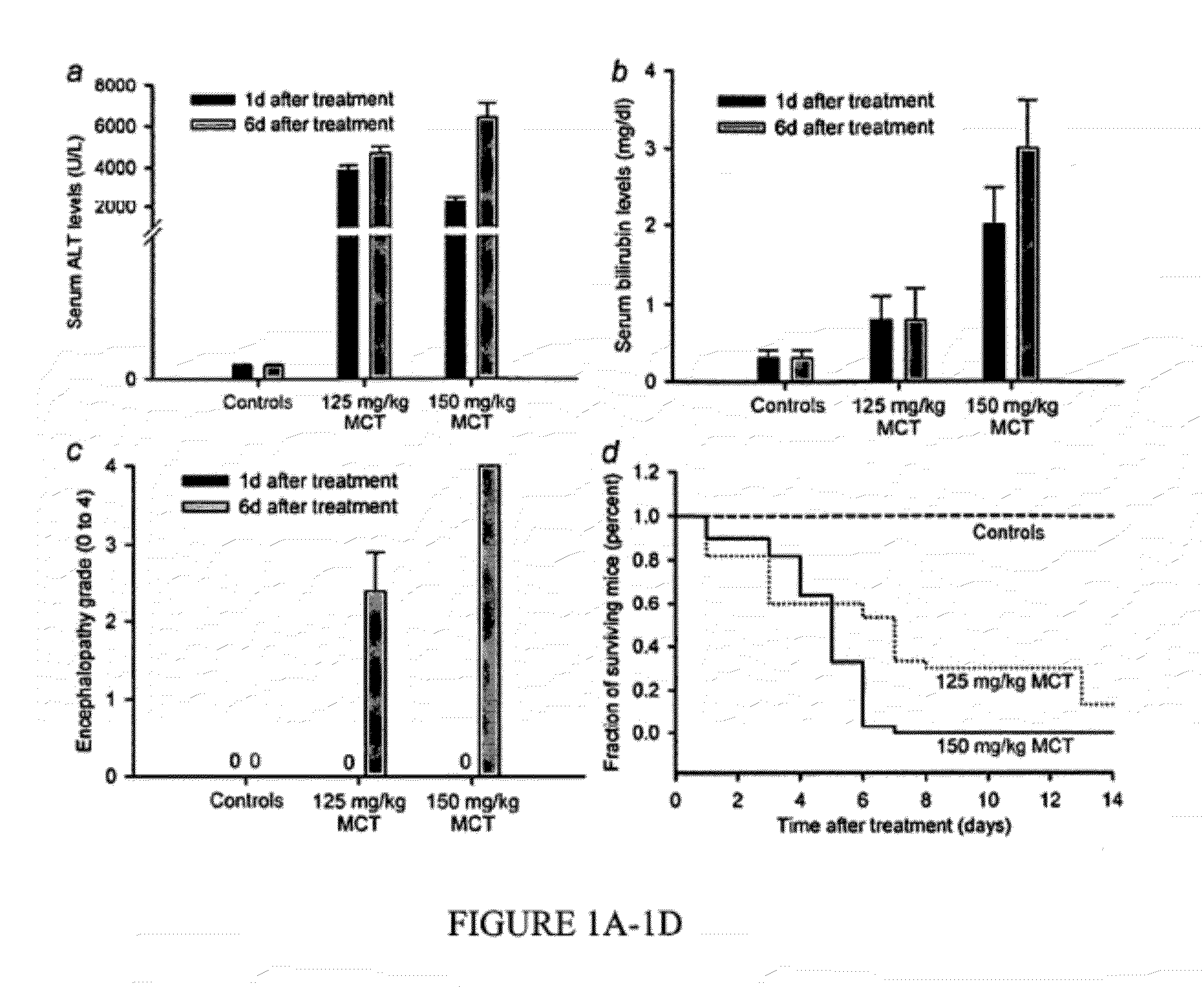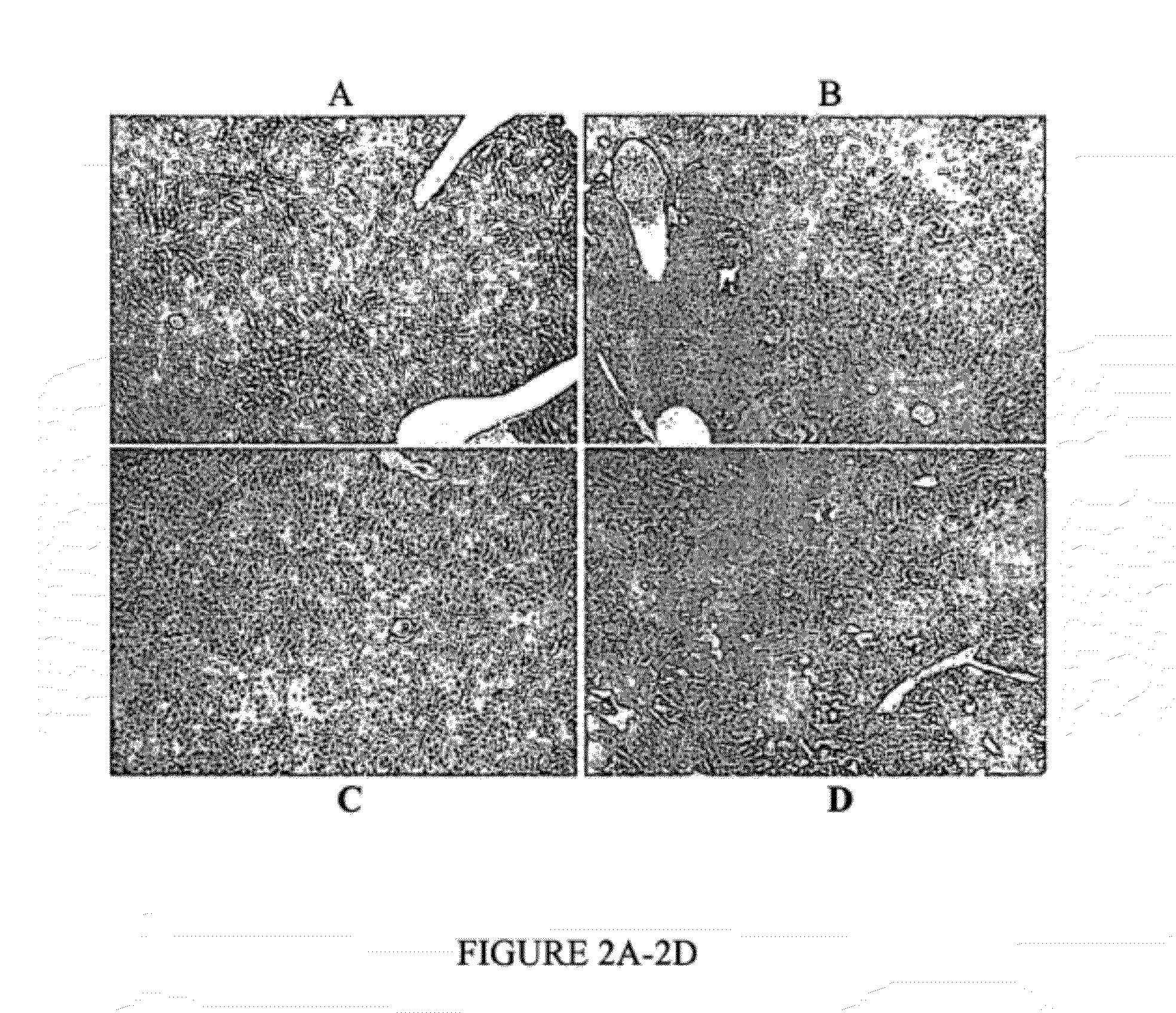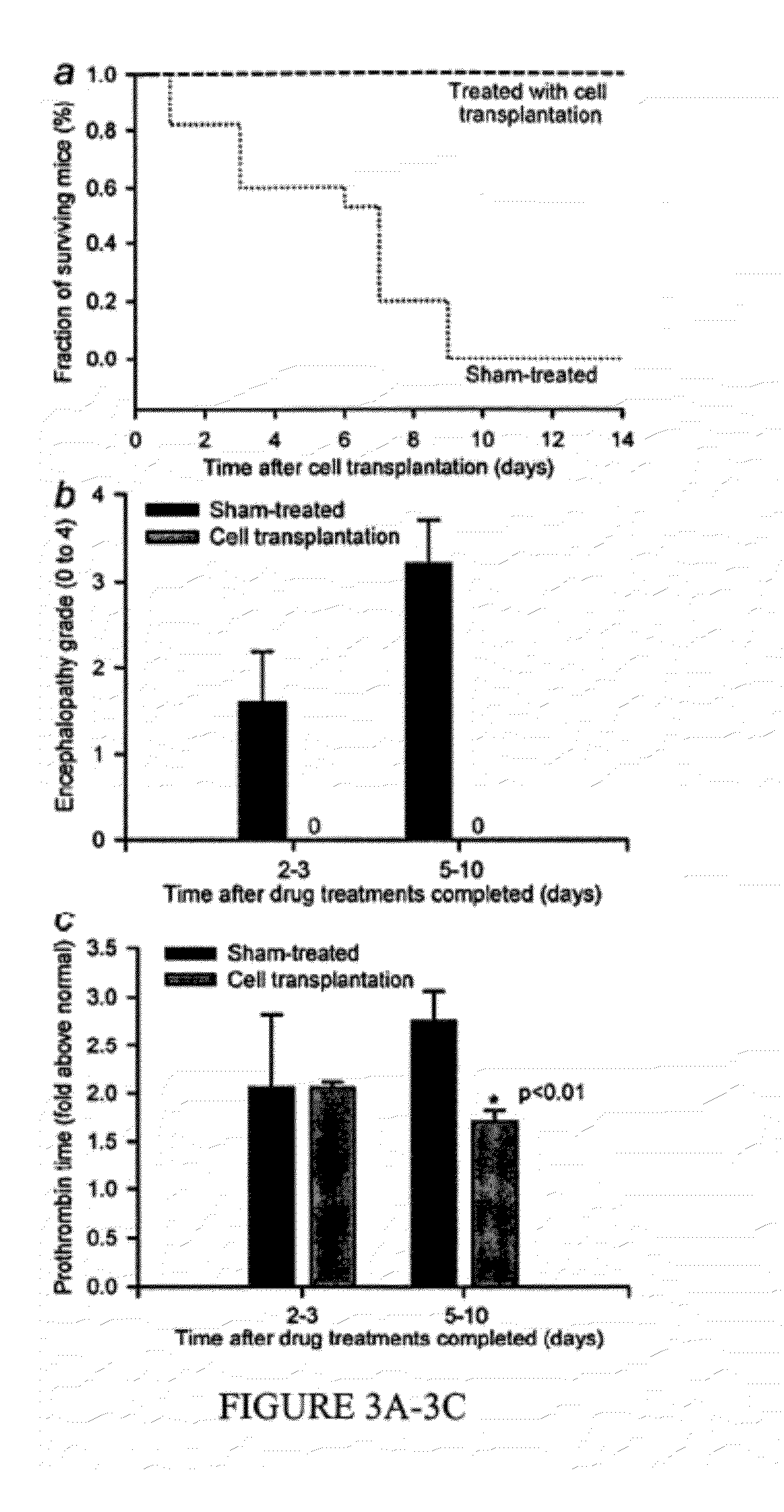Cell therapy for treatment of liver failure
a liver failure and cell therapy technology, applied in the direction of embryonic cells, biocides, drug compositions, etc., can solve the problems of hepatic injury and inflammation, incomplete understanding of the molecular pathophysiology of acute liver failure, and inability to replace the whole liver
- Summary
- Abstract
- Description
- Claims
- Application Information
AI Technical Summary
Problems solved by technology
Method used
Image
Examples
example i
Treatment of Liver Failure Using Hepatocytes
Overview
[0023]A strain-specific model of acute liver failure in xenotolerant natural-onset diabetes severe combined immunodeficiency, NOD.CB17-Prkdcscid / J mice, was used, where the antitubercular drug rifampicin (Rif), the anticonvulsant drug phenyloin (Phen), and the pyrrolizidine alkaloid monocrotaline (MCT), cause acute liver failure, and compared with immunocompetent mice in inbred C57 / BL6 background, which suffer liver injury but not acute liver failure (Wu et al., 2008). As animals survived over several days, a window for cell therapy was available to establish whether extrahepatic support from transplanted hepatocytes would be sufficient for rescuing animals and whether proliferation of native hepatocytes could regenerate the liver without reseeding with healthy hepatocytes.
Methods
[0024]Animals and procedures. The Animal Care and Use Committee of Albert Einstein College of Medicine approved animal use in conformity with National Res...
example ii
Treatment of Liver Failure Using Cells Derived from Human Embryonic Stem Cells, Adult Human Liver and Fetal Human Liver
Introduction and Overview
[0047]During embryonic and fetal development, pluripotential stem cells originate organ-specific stem / progenitor cells. In turn, these stem / progenitor cells produce cell lineages in adult organs, e.g., hepatocytes, the major cell-type of the liver, arise from fetal hepatoblasts. Recently, human embryonic stem cells (hESC), derived from the inner cell mass of the embryo at the blastocyst stage (Thomson et al., 1998), and iPS, derived by nuclear reprogramming of somatic cells from individuals (e.g., Nakagawa et al., 2008), gathered major interest for cell therapy and other applications. Stem cells are largely lacking in hepatic markers, whereas fetal liver stem / progenitor cells exhibit multilineage patterns of gene expression, and mature hepatocytes express characteristic complements of hepatic genes (Inada et al., 2008a,b). Also, fetal human ...
PUM
| Property | Measurement | Unit |
|---|---|---|
| Length | aaaaa | aaaaa |
| Volume | aaaaa | aaaaa |
| Volume | aaaaa | aaaaa |
Abstract
Description
Claims
Application Information
 Login to View More
Login to View More - R&D
- Intellectual Property
- Life Sciences
- Materials
- Tech Scout
- Unparalleled Data Quality
- Higher Quality Content
- 60% Fewer Hallucinations
Browse by: Latest US Patents, China's latest patents, Technical Efficacy Thesaurus, Application Domain, Technology Topic, Popular Technical Reports.
© 2025 PatSnap. All rights reserved.Legal|Privacy policy|Modern Slavery Act Transparency Statement|Sitemap|About US| Contact US: help@patsnap.com



